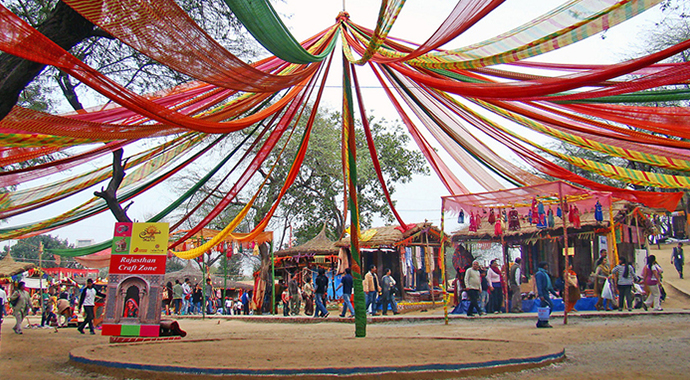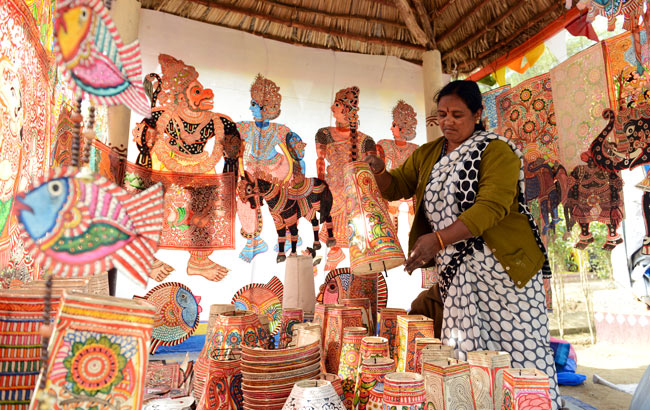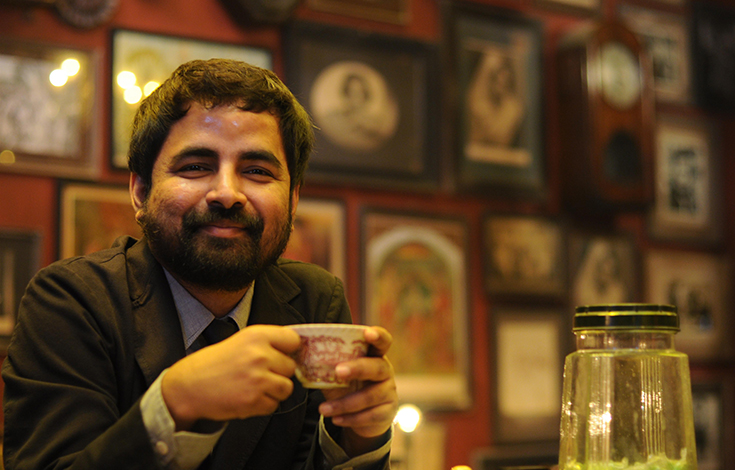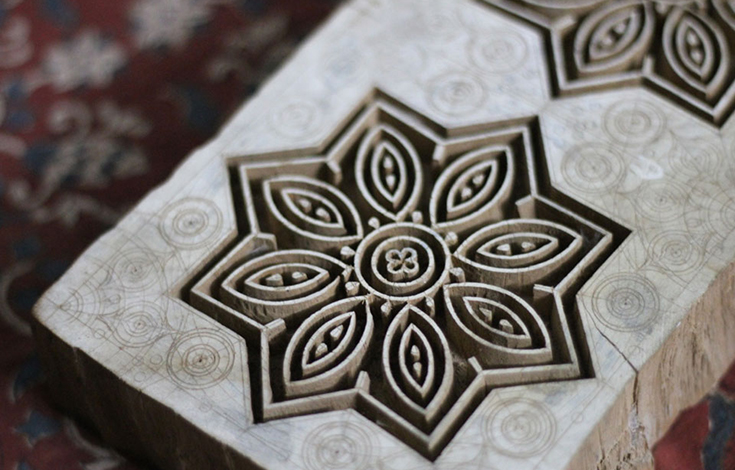As steady and robust centres for the sale of Indian artisanal crafts, melas (market fairs) have been held across India for over 1300 years. They are a part of many consumers’ landscape of nostalgia, almost everyone brought up in India can attest to attending at least one.
An important part of our social fabric, a staggering 25000 melas are organised annually across India – translating to nearly 69 per day. Beyond being important centres for the display, sale and purchase of craft, they are routine happenings that punctuate the lives of people in cities and villages alike. They often take place under the guise of religious festivals (70%), theme-based commercial exhibitions (20%) and cultural trade fairs (10%) though common amongst all is that they are, in essence, community gatherings with craft products for sale.
Melas are where we congregate to eat, enjoy, be entertained or simply, spend time. What is it that contributes to their continued substance as a marketplace and channel of craft distribution? Can this model be successfully taken online – the direction that most businesses today are exploring?
Artist and Karigar Khaled Amin Khatri resides in the small village of Ajrakhpur, Gujarat, and often travels with his extended family to Delhi, Kolkata, Chennai, Hyderabad and parts of Gujarat for melas. He says, “Showcasing in different states gives me the chance to understand their market and gives customers the chance to know my work. It’s good for both parties.”
While unmediated interaction with customers gives enterprising karigars like Khaled the opportunity to engage them in conversation, tell them about their products and maybe even gently prod to buy, for Yashna Shree, a digital media professional based in Mumbai, it’s purchasing craft directly from its source that adds to the thrill. She vividly remembers attending at least two fairs every year as a child, with family and friends in her hometown, Patna. She loves shopping at melas for “homemade and locally crafted pieces” and recently bought a pair of Rajasthani earrings from a small mela at Juhu Beach in Mumbai.
Above: images | Dastkar Crafts Mela
According to Dastkar, a private not-for-profit NGO best known for their well curated melas, the mela is still the best and most cost-effective way to bring karigars and urban consumers together. “Craftspeople can test-market their products to a huge range of customers, and learn firsthand about preferences in colours, sizes and styles. Dastkar can test-market the product design and entrepreneurship training it gives to its family of craftspeople. It’s an ideal and hands-on learning space”, shares Zubin Ekka from their communications team.
Khaled also sells his products at Jaypore.com, an online portal that curates a selection from karigars from all over India. He cites them as his favourite retailer for the sole reason that they pay him a lump sum cheque in a short period of time, owing to their flash sale model.
Bhuj-based bandhani craft entrepreneur Jabbar Khatri of Sidr Craft says no other channel of distribution gives them instant feedback like a mela does: “Our physical presence is missing from other models (of retail)”. It’s important to note that Jabbar is among the more well-established, entrepreneurial and connected karigars in India who is invited the world over for exhibiting his crafts. And though he conducted sales of 7 lakhs over 2-3 days at a recent exhibition in Delhi, he does not depend on traditional melas for sale of his products. “We cater to and focus on individual clients and other channels like physical stores which are not seasonal or transitory. Revenue from those streams is what helps us sustain our business,” he says.
Low infrastructural costs of displaying at a mela and circumvention of middlemen keeps pricing of products low yet profitable; a win-win for self-employed karigars with little capital, as well as buyers, who often find unique handicrafts at a mela at an equitable rate albeit after considerable weeding through, rummaging and hunting.
Physical stores and online platforms sometimes offer a solution through design intervention and curation, offering the best of a mela exhibit and store selection to the consumer even if at a premium. “Besides a fairly larger representation of products in a category (compared to a mela), the online retail space also allows the buyer to often discover new crafts and understand their place in the context of their history,” says Shilpa Sharma, co-founder of Jaypore. She adds, “the enhanced product resulting from design direction captures the buying habits of the consumer, makes the product better suited as a global offering and infuses it with currency.”
Above: image | Surajkand International Crafts Mela
The online store has upwards of 300 artisans who contribute apparel, jewellery, home decor, accessories and vintage items. “We look for products that are high on the hand-crafted quotient and embody a contemporary design language,” says Shilpa, explaining their selection criteria.
The audience in traditional melas is not necessarily representative of the audience at Jaypore – only about 30-35% of what we find at traditional melas might make its way to the website.
Jabbar used to retail with Jaypore but does not sell online anymore as web stores work on consignment basis, which he is not comfortable with. He also points out a fundamental that’s missing from the online model: “there is no way to touch and feel the product till you receive it.” Having been around for centuries, melas are an important lifeline for karigars with small capital and production capacity – for distribution, progress, fame and income.
They are the testing ground for products, designs and market viability for many craftsmen. As for customers, melas are a confluence of social, cultural and economic exchange – they are almost a celebration.
While data on the efficiency of melas is highly fragmented and obscure, their continued presence in India in numbers as large as stated at the start say something about the strength and relevance of this model.
As e-commerce continues to grow, melas having counterparts online seems plausible. In Dastkar’s case, if only in theory: “E-commerce is the digital version of a craft mela, but to do it in a way that suits small craft producer groups who do not have either ready stock or storage capacity is something Dastkar is still wrestling with. We hope to develop an innovative solution soon”.
___________________
1, 2, 3 A Brief Study on Haats (weekly bazar) and Melas







